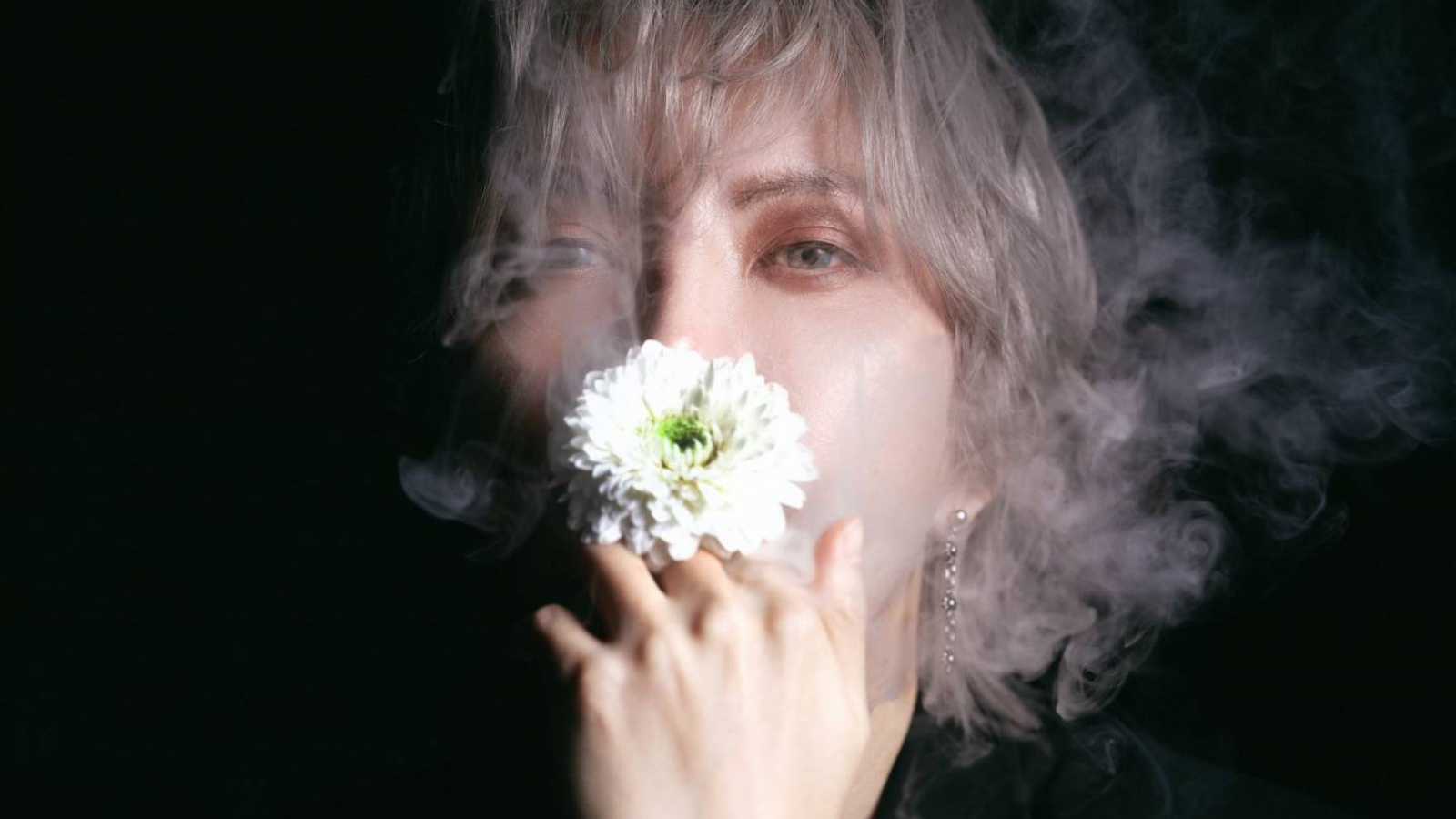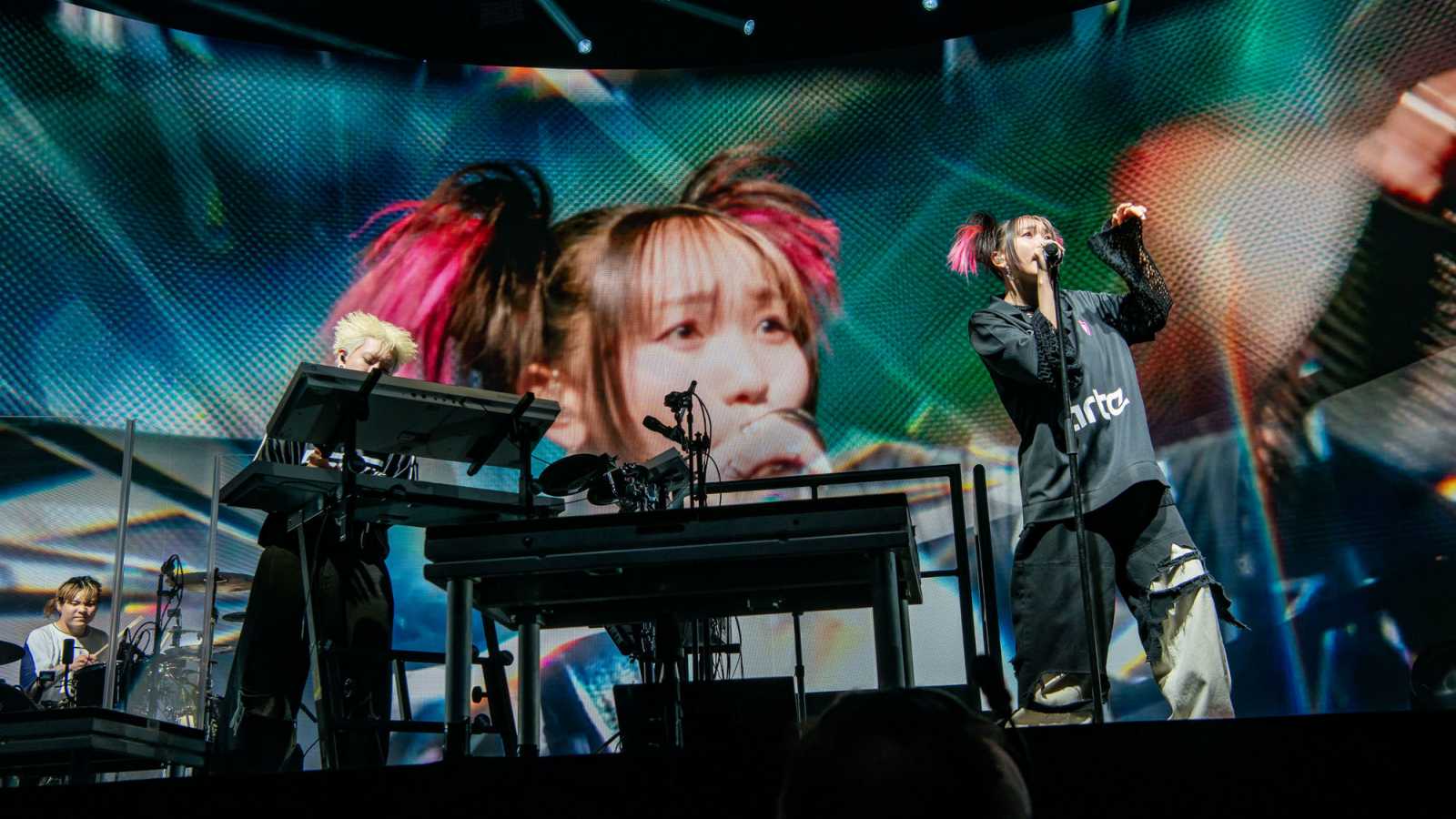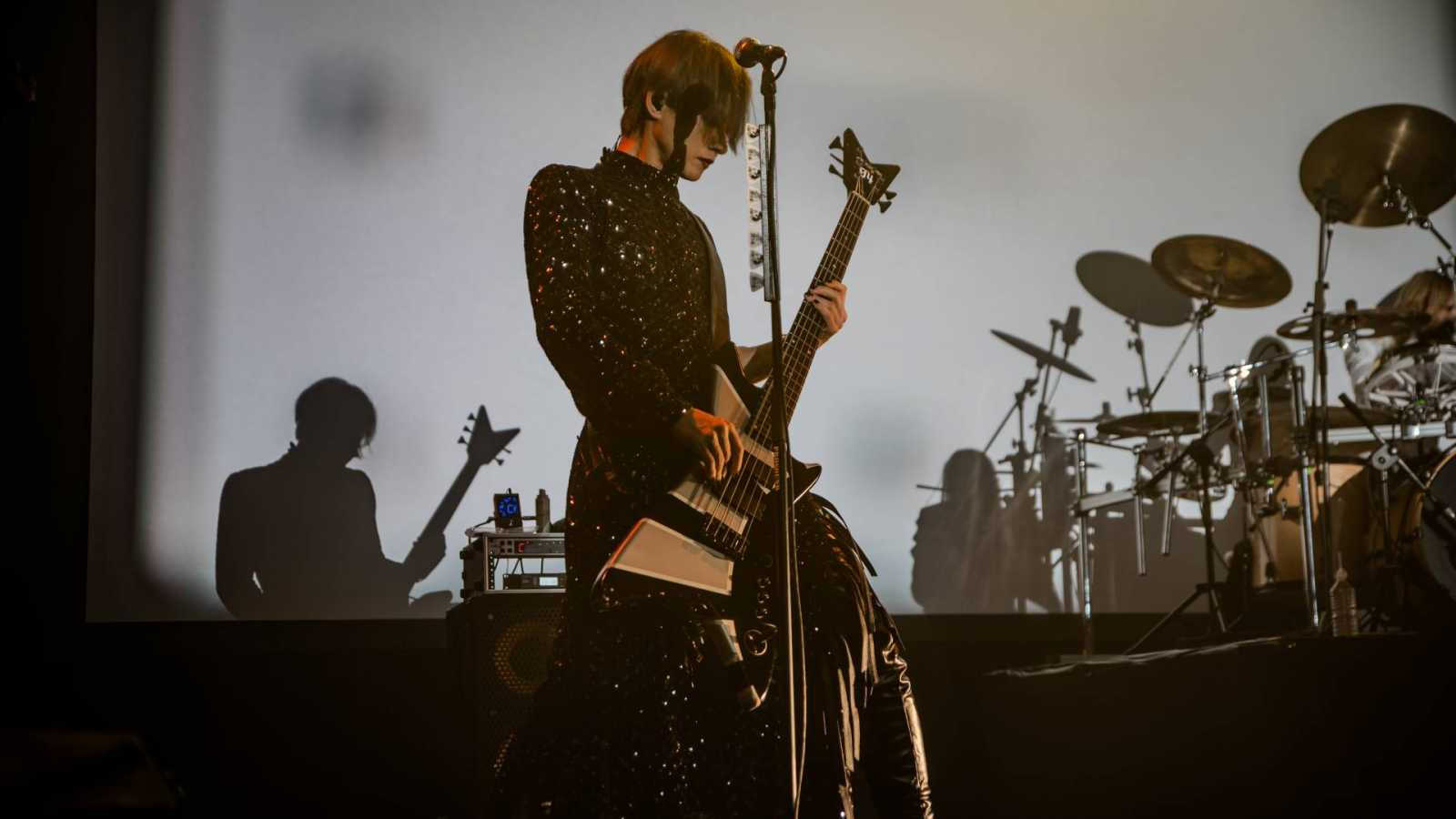THE BACK HORN is an alternative rock band. Inspired by groups such as Nirvana and Radiohead, they have an emotional thrash-punk sound that won them a huge following, even in the early stages of their career.
In April 1998, guitarist Suganami Eijun, who had moved to Tokyo from the Fukushima prefecture, convinced his friends Yamada Masashi, Hirabayashi Naoki and Matsuda Shinji to form a band. They were originally called Gyorai, but later changed their name to THE BACK HORN, which came from Matsuda’s mispronunciation of “The Back Hoe”, the original idea they had agreed upon.
In August 1999 they received their first major exposure, playing at the Fuji Rock Festival. A month later, they released their first mini-album, Doko e yuku, on a label called Kando Records. Wasting no time, the group released their second album Yomigaeru hi just seven months later. Their final release on Kando Records was the maxi-single Fuusen in September 2000. A few months later they signed with the major label Speedstar Records.
The next year brought a big setback for the young band. Although they had signed with a major label, Hirabayashi decided to leave THE BACK HORN in April, just before the release of their major debut single Sunny. Despite losing their bassist at such a critical moment, they performed at several events in August and released their second single, Sora, hoshi, umi no yoru. Just two months later, the band’s first major album, Ningen Program, was released.
It was around this time that Okamine Koushu joined up with THE BACK HORN as their support bassist. During 2002 Okamine entered the studio, still as a supporting musician, to help the band record their next couple of singles, Sekaiju no shita de and Namida ga koboretara.
More festival appearances followed, and during the tour to promote the album Shinzou Orchestra, the band announced that Okamine would become their official bassist.
2003 was an exciting year for the band, as director Kiyoshi Kurosawa personally asked for one of their songs to be featured in his film “Akarui Mirai”. As a result, January 2003 saw the release of the single Mirai.
When the official soundtrack for the movie “Casshern”, Our Last Days, was released, THE BACK HORN contributed a brand new song to it. With this high profile movie, of course, came a big popularity boost. Three months later the band was in Hibiya for the first of two summer one-man lives. During this performance, they announced the release of their next single, Yume no hana. This single showed a distinct maturation of the band’s sound, which seemed to please their fans, as appearances at high profile events such as the Rock in Japan Festival followed.
2005 started well for THE BACK HORN with the release of another single, Kizuna Song, followed by their fourth album Headphone Children just three months later. This ambitious, diverse album included another movie song, Kiseki, which was written for the horror movie series “Zoo”. Their mainstream popularity was rapidly increasing, resulting in an amazingly successful tour to promote Headphone Children, which prompted the release of a live album. This came in the form of Ubugoe Chainsaw, which featured recordings from a tour of the same name.
Despite their impressive national success, the group still made time for their European fans, appearing briefly in Spain. After this quick trip, they returned to a fully-booked live schedule in Japan and released the single Black Hole Birthday in December 2005 - their first in eleven months.
The band continued to release singles and perform, including an acoustic street tour where Yamada and Suganami played on the streets of Japan for free. The year 2007 saw their single Wana being used as the ending theme to the anime series “Mobile Suit Gundam 00”. This anime connection not only won the band a great deal of international exposure, but helped Wana hit the number nine spot on the Oricon charts. Better still, the album that featured the song, Pulse, went on to reach the number five position—their highest Oricon ranking to date.
In 2008, they released their first greatest hits album, Best the Back Horn, to commemorate their 10th anniversary. Coincidentally, that year also happened to be their label’s 15th anniversary. Yamada collaborated with labelmate Ayano Tsuji for a performance at Speedstar Records’ 15th Anniversary Live, which was released on DVD on March 26th. Towards the end of the year, the band went on to display their incredible work ethic, completing a tour that took them to thirty venues in just two months.
October 2009 saw the band perform at the 207 Man’nin no tensai. Kaze to Rock Festival Fukushima, alongside acts such as TOKYO No. 1 SOUL SET and Sanbomaster. The event also featured collaborations between members of the performing groups. The group released a few DVDs in 2009 before returning to making new music with the single Tatakau kimi yo in 2010. That year, the album Asylum also came out, climbing to the number nine spot on the Oricon charts.
In 2011, after the Fukushima Daiichi nuclear disaster, the members of THE BACK HORN performed at many charity events to help their hometown. Furthermore, they released the single Sekaijuu ni hanataba o, all proceeds of which were donated to relief efforts for the victims. Matsuda also formed Inawashirokos, a band made up of himself and three more musicians from the Fukushima prefecture: Yamaguchi Takashi (Sanbomaster), Michiko Yanai (Kaze to Rock) and Watanabe Toshimi (TOKYO No. 1 SOUL SET). On March 26, 2011, the group released a charity single called I love you & I need you Fukushima to support their hometown. The video for the song featured 47 actors and actresses from different prefectures singing along and attempting to encourage the country to maintain its solidarity during the crisis.
After regaining their bearings, the band resumed their usual level of productivity the next year, releasing the single Sirius and the album Liv Squall and touring extensively. With the release of a live DVD, a single and a B-side collection, 2013 was yet another busy year for this remarkable group, and they show no signs of slowing down anytime soon.




